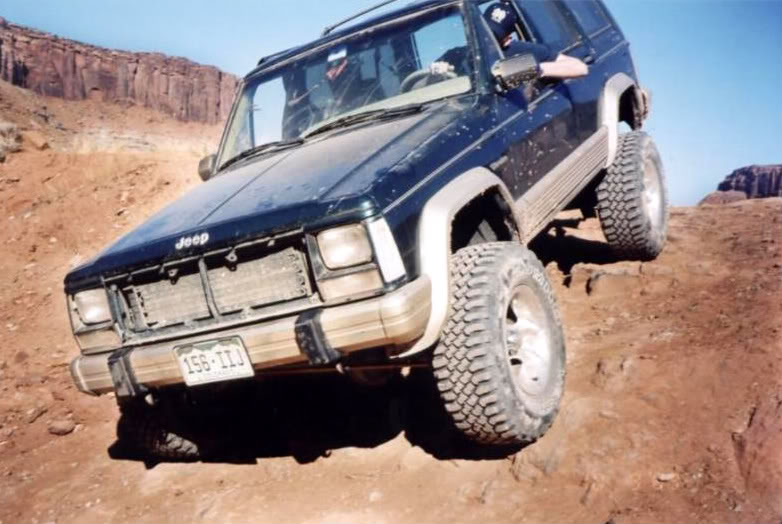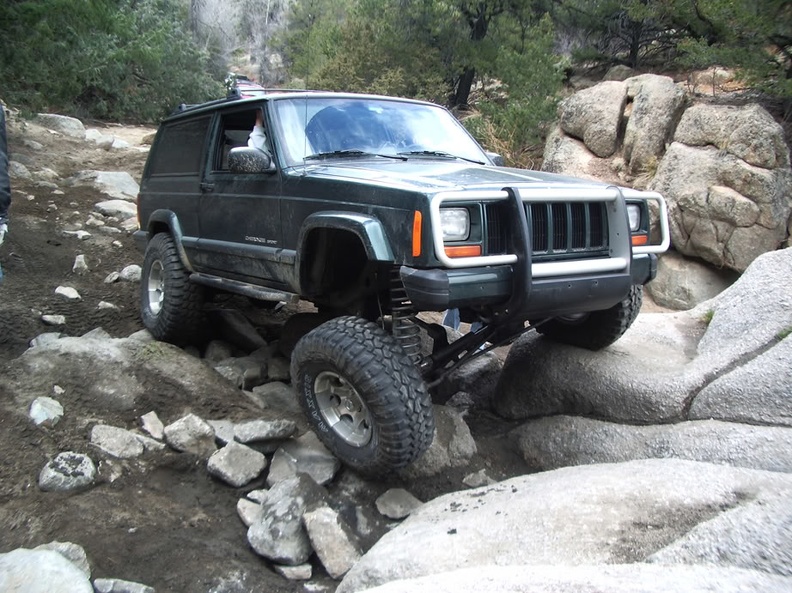Heavyopp
NAXJA Forum User
- Location
- Middlesex, NJ
$55.97 shipped to my door from Advance using a 30% off coupon for the full kit -- Thanks
Actually, the OEM's do a LOT more testing than most people would think. They don't just run calculations then sit on them. I've had more insight into this, as I have a few friends that have or do work for the big 3 (or others).
One thing they do, is ship the vehicles out to Colorado, in the summer, and run them up and down I-70, among other areas. The hot weather (can be 100* or more), plus the steep inclines going up and down I-70 pushes them a bit harder than they can get outside of a lab within reason.
With discussions from these guys (we're all engineers), more than one of them I came to know through XJ's.
When we've gotten to the subject of cooling, they'll mention that even with larger tires, the vehicles OEM cooling system is plenty adequate as designed. Obviously, things like steering and trans can always benefit from a cooler (and if towing, a trans cooler is always recommended).
That being said, all electrical under the hood, *should* be rated no less than 1.5 times the operating temperature, in many cases, the electrical should be fine upwards of 400* before issues may start. You'll have issues with the PCM long before wiring and such.
Most of the electrical connections are not fully waterproof, but are water resistant, hence why the TPS and IAC can get really irritated when water gets around them (had it happen myself).
There are some waterproof connections (e.g the Weatherpack fitting on the E-Fan), but most aren't, as they didn't need to be.
As to the wheeling in AZ. I've known guys from AZ to Southern FL wheeling full bodied XJ's with anything from 35's to one tons (who still have their AC), and have no cooling issues. I lived in SoCal for a year, driving it to and from CA, and wheeling JV, Calico, etc. without ever a blip on the radar. The only issue I did have, was oil temps wanting to get a little high. I still had AC, full bodied with doors, etc.
People tend to want to take the shot route, instead of putting in the work to make their stuff work (as had been brought up on this site so many times).
A working T-stat (I would verify operation before install), good water pump, a flushed system (and I mean a full flush without the pump of t-stat housing on), a flushed heater core, and good (not clogged, leaking, etc.) radiator tend to be plenty.
The next steps:
- Transmission cooler (this can help engine temps since the trans runs through the radiator)
- ZJ fan clutch - I've seen a few systems where the fan clutch needed replacing, and that helped a bit. People tend to assume because the fan is there, and somewhat rotates it's working as it should
- E- Fan bypass switch - this can really help with just sitting around. Stopping on the trail for lunch? Let the e-fan run. Hell, I think most people just assume their E-Fan runs properly :laugh:
- Exhaust wrap - While it "may" cause a shorter exhaust header life span, it will significantly help direct the heat down and out the exhaust, instead of lingering in the engine bay.
- For the late models, injector heat soak can be an issue. There was a TSB about this, and there should be heat reflector shielding around the injectors and intake. I've got a 2001, and will be replacing it on mine. I could go all out with DEI wrap, but I'll take the easy route for now.


If I recall correctly none of your XJ's have the cali emission pre-cats under the hood
Would not a raised hood hinge suffice to let lot of heat out, yet maintain rain protection? Maybe lift the rear of hood at hinge with spacers and longer bolts say an inch or two?
I wheeled my '94 on 4.5" lift and 31's in Moab with stock gears and stock 125k mileage cooling. All I had to do was remove my grille to improve air flow to the radiator and I never overheated. When I built my '99 it had proper 4.88 gears on 6" and 33"s, I upgraded to a Hesco water pump and an all aluminum 2 row radiator. Wheeled in Moab again, never got close to overheating. As has been mentioned, hood vents are a bandaid to some other problem.
Here's the OEM MOPAR heat shield:
https://www.amazon.com/dp/B01EIBMUS...a432-fe6d90b388b5&ie=UTF8&qid=1524240237&sr=1
Here's the full kit from DEI:
https://www.amazon.com/Design-Engineering-010378-Engine-Injecter/dp/B015NOKWQY
You can shop around on both of them and probably find them a little cheaper, or through Advance Auto and use coupon codes.
I haven't ordered mine yet, and I haven't decided if I just want to do the single shield, or the full kit.
EDIT: With a 30% off Advance Auto Coupon code, it comes to $56.03 shipped. So, I'll probably just do the full kit, as it comes with injector covers, manifold heat shield, and a fuel rail cover.
Mine was done by the dealership per the service bulletin. It is much better but will still heat soak when it is really hot out. If I had done it myself I would have bought the complete kit.
Mine was done by the dealership per the service bulletin.
You chose aftermarket radiator and water pump, others choose hood vents. Neither are bandaids if they help, they’re just mods.
Some years actually came with blankets installed to the underside of the hood.
I believe that's more for noise insulation
